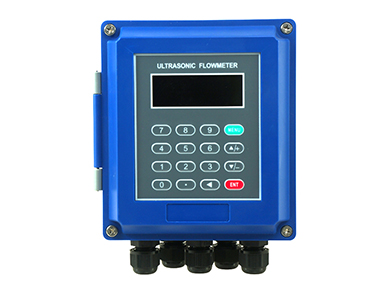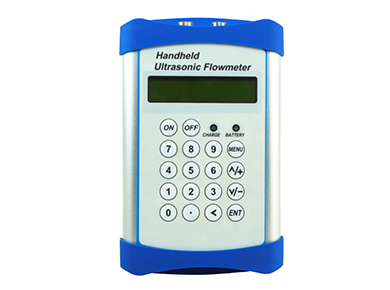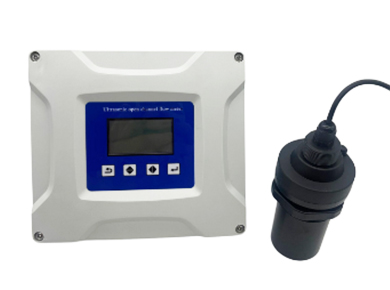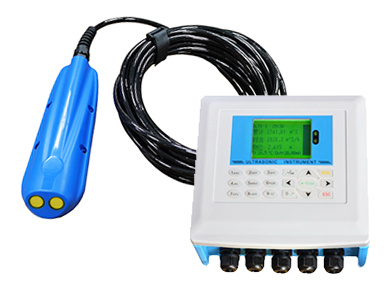Ultrasonic flow meter is a kind of instrument that utilizes ultrasonic technology to measure the flow rate of fluids in pipes or other channels. It transmits ultrasonic signals and analyzes their propagation characteristics in the fluid (e.g., propagation time, frequency shift, etc.) to calculate the flow rate, and thus the flow rate.

Need to measure the pipeline flow and need to easily view the data and operation, but also want to protect the electronic components, wall-mounted ultrasonic flowmeter is a common and practical choice.
How does ultrasonic flowmeter work?
- Time Difference: Measurement of the time difference between the propagation of ultrasonic waves in the downstream and countercurrent directions, the time difference is proportional to the flow velocity, suitable for clean fluids.
- Doppler method: Measures the change in frequency (Doppler shift) of ultrasound waves reflected by moving particles or bubbles in a fluid. The shift is proportional to the flow rate and is suitable for fluids containing suspended solids.
Advantages
- Non-Contact Measurement: The sensor does not come into direct contact with the fluid, avoiding wear, corrosion and contamination.
- Wide range of applications: Liquids, gases and vapors can be measured.
- High accuracy: High measurement accuracy can be achieved under suitable application conditions.
- Low pressure loss: Very low pressure loss due to the absence of fluid-obstructing parts.
- Flexible and easy installation: Especially for external clamping, no shutdowns or cutting of pipes are required.
- Low maintenance costs: No moving parts, low maintenance requirements.
- Wide range of media: Suitable for a wide range of conductive and non-conductive media.
- Wide range ratio: Wide flow ranges can be measured.
Applications
- Water Treatment (tap water, sewage)
- Oil & Gas (crude oil, natural gas)
- Chemical (corrosive liquids, slurries)
- Food & Beverage (milk, beer)
- Pharmaceutical (purified water, pharmaceutical solutions)
- HVAC (chilled water, hot water)
- Power (cooling water, boiler feed water)
- Metallurgy (cooling water)
- Agricultural
- Shipbuilding



